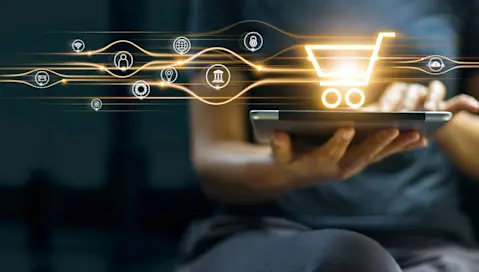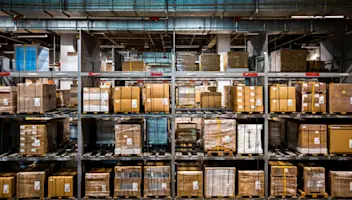Should Consumer Goods Businesses Who Are Expanding Ecommerce Efforts Leverage a 3PL or Go Full-Force on Their Own?
Should Consumer Goods Businesses Who Are Expanding Ecommerce Efforts Leverage a 3PL or Go Full-Force on Their Own?
Should Consumer Goods Businesses Who Are Expanding Ecommerce Efforts Leverage a 3PL or Go Full-Force on Their Own?
23 Sept 2020
Ken Weygand
When you’re looking to rapidly scale your ecommerce operations, turning to a third party logistics (3PL) provider or managing orders and fulfillment on your own with an industry-specific enterprise resource planning (ERP) solution can be a difficult choice.
It’s complicated, and the right decision depends on your situation. Your consumer goods business needs to consider whether you have the resources, processes, people and technology necessary to maintain a successful ecommerce enterprise. That will help you determine whether using a 3PL partner or managing ecommerce order fulfillment and shipping in-house is the most efficient and profitable direction for your business.
Let’s break down each of those categories a bit further:
1. Resources
If you have an ERP with the features and functionality necessary to scale your ecommerce presence, then utilizing and leveraging the resources you already have may be your best bet. Of course, successful ERP deployment goes beyond merely having it; you must use it in conjunction with your workforce and the resources that are already in play.
It’s also worth considering the number of warehouse locations you have and where they’re located. If your business only has one warehouse, and it’s on the West Coast near a port, quickly distributing ecommerce orders to the East Coast could be challenging. If, for example, you need additional warehouses to meet the high volume of ecommerce orders, then that could be a high cost to consider, in terms of managing the orders yourself.
Alternatively, leveraging a 3PL that is already equipped to meet delivery dates and volume will not require a budget for expansion, though it will still add costs. You have to evaluate your business goals and finances to see which option is more profitable for your enterprise.
Finally, it would help if you thought about whether or not you have enough space in your current warehouse(s) to store additional inventory, enough automation within your warehouse to help fulfill ecommerce orders (scanning vs. GTIN, conveyor belts, etc.), and enough packaging materials (boxes, bubble wrap, labels, etc.) to move these individual ecommerce orders quickly. It’s easier to take on ecommerce orders if you’re already equipped with these capabilities. Otherwise, it’d be beneficial to calculate the costs of adding these resources against the value of leveraging a 3PL.
2. Processes
Managing a new fulfillment model is a massive shift and a big adjustment. If you don’t have the processes in place to effectively and efficiently manage ecommerce orders along with standard retailer orders, it’s going to be a bumpy road to do all that work in-house.
For example, if your current processes include going to vendors to print orders, mailing sites to print labels, using manual labor to accomplish operational tasks or any combination of the three, then leveraging a 3PL or integrating an ERP with WMS functionality is a necessary move. If, during your ecommerce shift, you realize you’re going to be busier than you anticipated, it may be more beneficial to leverage a 3PL. Typically, 3PLs have more space and automated processes.
Utilizing a 3PL could be about location. If you’re operating in a place like New York but your orders are primarily coming from the West Coast, it may be more efficient to leverage a 3PL on the West Coast rather than paying exponential amounts for shipping. You’re able to get products to customers more quickly without incurring a ton of shipping fees. If you’re looking to manage ecommerce sales in-house, having technology in place that can adapt to ensure your business can fulfill both retailer and ecommerce orders is critical. If you have an outdated ERP, you may not be able to develop efficient processes for ecommerce orders. You’d be able to manage it, certainly, but it won’t be nearly as efficient or as profitable as a consumer goods ERP would be.
3. People
Do you have enough human resources to fulfill the high volume of (DTC) ecommerce orders? You may be able to rely on your in-house resources if your workforce is capable of managing and shipping high volumes of small parcels with efficiency and accuracy. If you run a small shop and don’t think you can keep up with all your orders, you may want to explore 3PLs as they can take on this burden for you.
Managing ecommerce in-house allows for more control and ownership. A 3PL partner that doesn’t know your consumer goods business as well as you do may not pay as close attention to the details. You worked hard to cultivate your business, so you may not want to risk your customer relationships simply because you don’t have enough people to manage the influx of orders. If you choose to manage ecommerce orders in-house, you may be able to utilize your current workforce and train them to fulfill and ship DTC orders efficiently. Or you could hire dedicated workers solely to fulfill ecommerce orders. The changes you make will depend on your specific organization. No matter your scenario, the goal remains the same: customer satisfaction. Ensure customer satisfaction by meeting shipping demands and order requests in a timely and efficient manner. Robust, industry-specific technology in partnership with your workforce supports your business’s management of ecommerce orders efficiently and profitably.
4. Technology
You need the right technology in place to assist with ecommerce fulfillment and shipping to ensure it’s profitable for your business. There’s a lot you can do with a consumer goods ERP. You’re able to process orders quickly, use seamless electronic communication (via EDI), scale up or down, and efficiently manage volume and monitor the financials of the enterprise to ensure that you remain profitable and effective. All because of the functionality and efficiency of a built-in enterprise solution.
It’s a solution with all of this in one place and enables you to see what’s happening in as close to real-time as possible. A 3PL certainly has all of the technology necessary to meet demand and fulfill orders, but it lacks complete visibility into the process. You must trust your 3PL partner to do the work and dedicate the attention that you would have if you were managing your business in-house.
You know what’s best for your business. And we want to help you get there. To find out more about expanding your ecommerce presence for your consumer goods business, reach out to us.
Related Content


Prêt à transformer votre entreprise ?
Nous avons les solutions ERP spécialisées dont vous avez besoin pour relever les défis de votre secteur.






